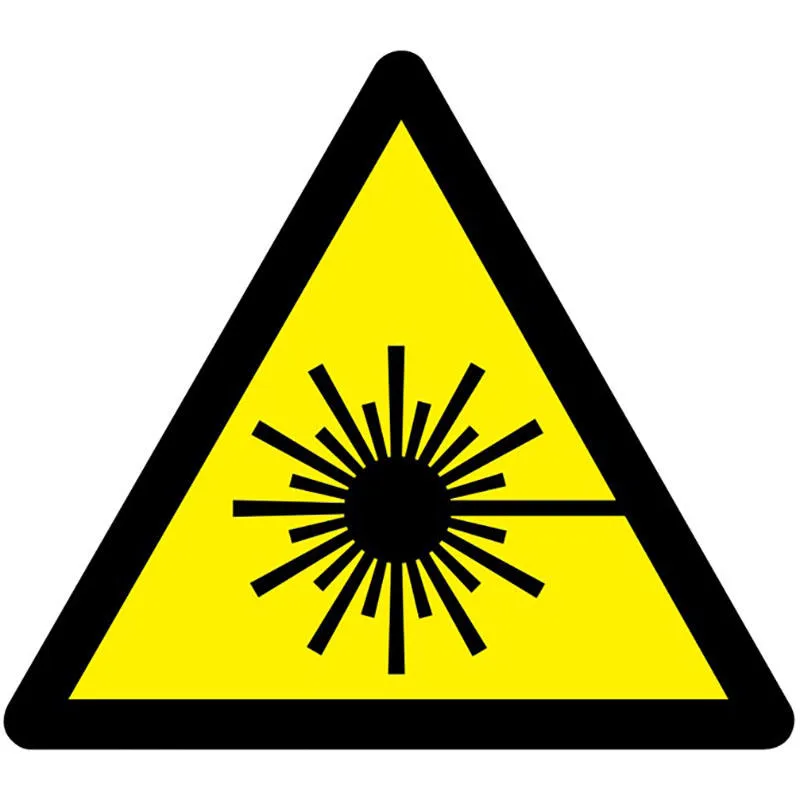Working with lasers obviously comes with important safety implications. But did you know that getting proactive about laser safety can give your business a competitive advantage? Here are some of the rules, regulations and safety recommendations to be aware of.

What is laser printing?
From medical equipment to food packaging, we live in a world with an increasing onus on traceability and product identification. Laser coding is a fast way to add human readable texts, graphics, variable and serialised data as well as 2D Codes to a huge variety of substrates. Cartons, glass, wood, metal, plastic – you name it.
An indelible permanent mark is left on the substrate by using a laser beam, guided by mirrors, to vaporise the surface layer of the material. It’s a process that’s completely free from inks and fluids, making it cost-efficient and environmentally-friendly too.
RELATED:
>> UDI for medical devices – what suppliers need to know
Why does laser safety matter?
Committing to laser safety is about more than regulatory compliance – even though that’s important (especially to avoid fines). The most important aspect of any laser safety policy is securing the wellbeing of your staff. When your employees can see that you are serious about preventing accidents and creating a safe working environment, there’s an obvious knock-on effect on team morale.
That’s not all. A good safety policy will prolong the lifespan of your equipment, prevent downtime and increase your operational efficiency. In short, laser safety shouldn’t be seen as a health and safety box-ticking exercise but an opportunity to boost team morale, protect your equipment and boost ROI.
What are laser classifications?
Lasers are categorised into four classes (and a number of subclasses) based on wavelength and maximum output power. These classifications define a laser’s health risk to anyone exposed to optical radiation.
Lasers in Class 1 bear no optical radiation risks for humans because the laser radiation remains well below 25 microwatts. Exposure to Class 4 lasers, meanwhile, can result in serious eye injuries and burns to the skin. That’s why classification and the associated appropriate safety measures are so important. For example, Class 4 lasers must be equipped with a key switch and a safety interlock.
It’s the responsibility of the manufacturer to correctly classify the laser and apply the appropriate warning labels to the equipment. However it’s important to remember that the laser classification system does not take into account additional laser risks, such as electric shock, airborne contamination or fire.
Choosing your laser guarding
The job of laser guarding is to prevent employee exposure to optical radiation. As you would expect, appropriate guarding is based on the strength of the laser you are working with. As a general rule laser guarding is opaque and metallic. If you need your guarding to be transparent, it must be made from acrylic or polycarbonate materials.
The thickness of the guard material depends on the amount of ‘burn through’ anticipated from the laser. Thickness of at least six millimetres is required for 10W and 30W laser systems, while 8 millimetres is recommended for 60W laser systems. The final things to consider are the orientation of your guarding and its distance from the laser. It’s crucial to prevent the beam reflecting directly back on to the laser as this will damage your equipment.
Risk analysis
The accepted framework for risk analysis regarding the use of your laser equipment is EN ISO 13849. It provides an iterative framework to assess machine risk and implement the necessary safety measures to mitigate against those risks, such as the installation of interlock switches.
Stay safe, without the strain
Laser safety doesn’t have to be complicated – but it is important to get it right. Not only to avoid fines from breaching regulations, but to motivate your team, cut downtime, expand the lifespan of your equipment and run your coding operations as smoothly as possible.
Feel free to get in touch with any questions.